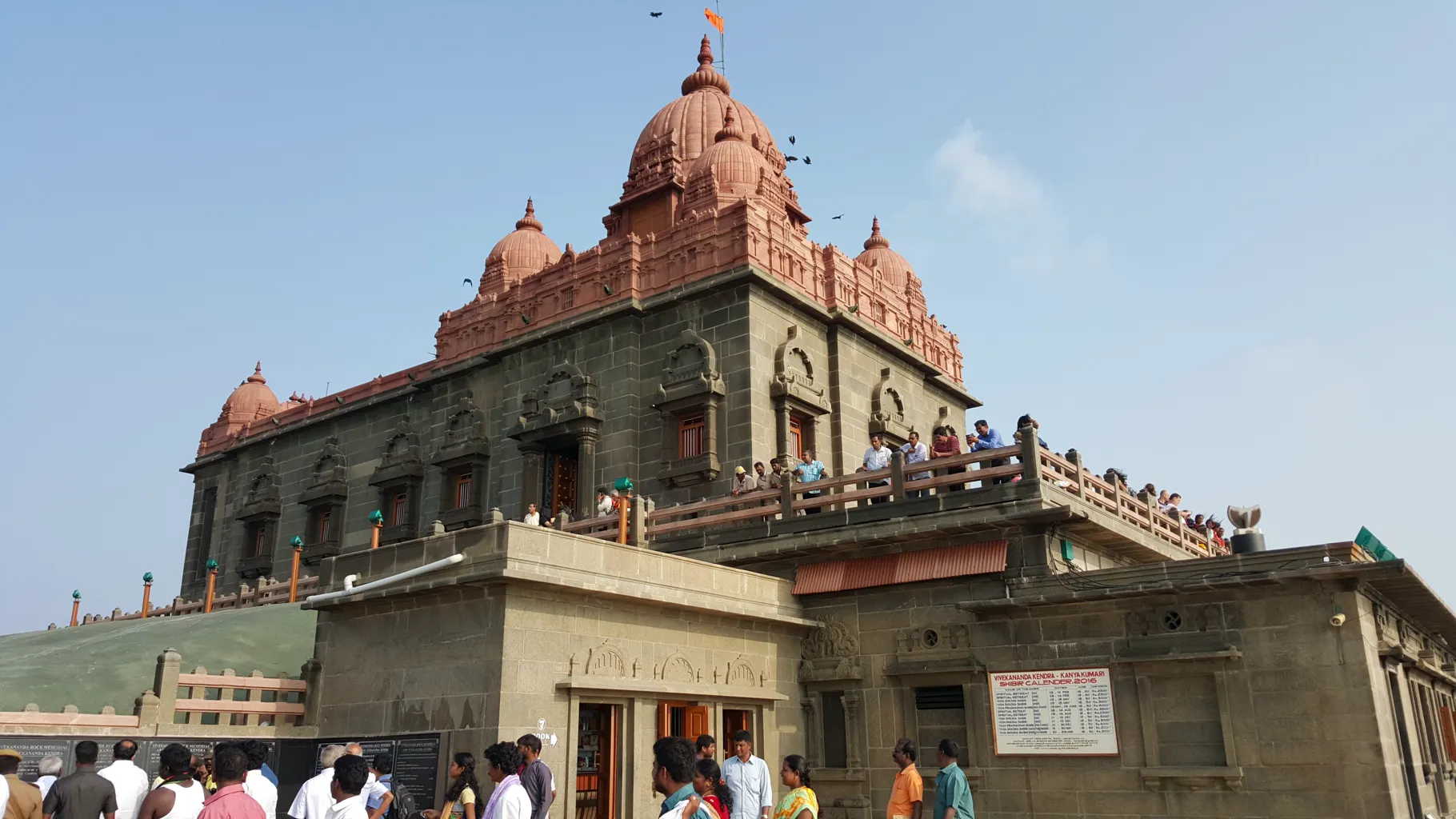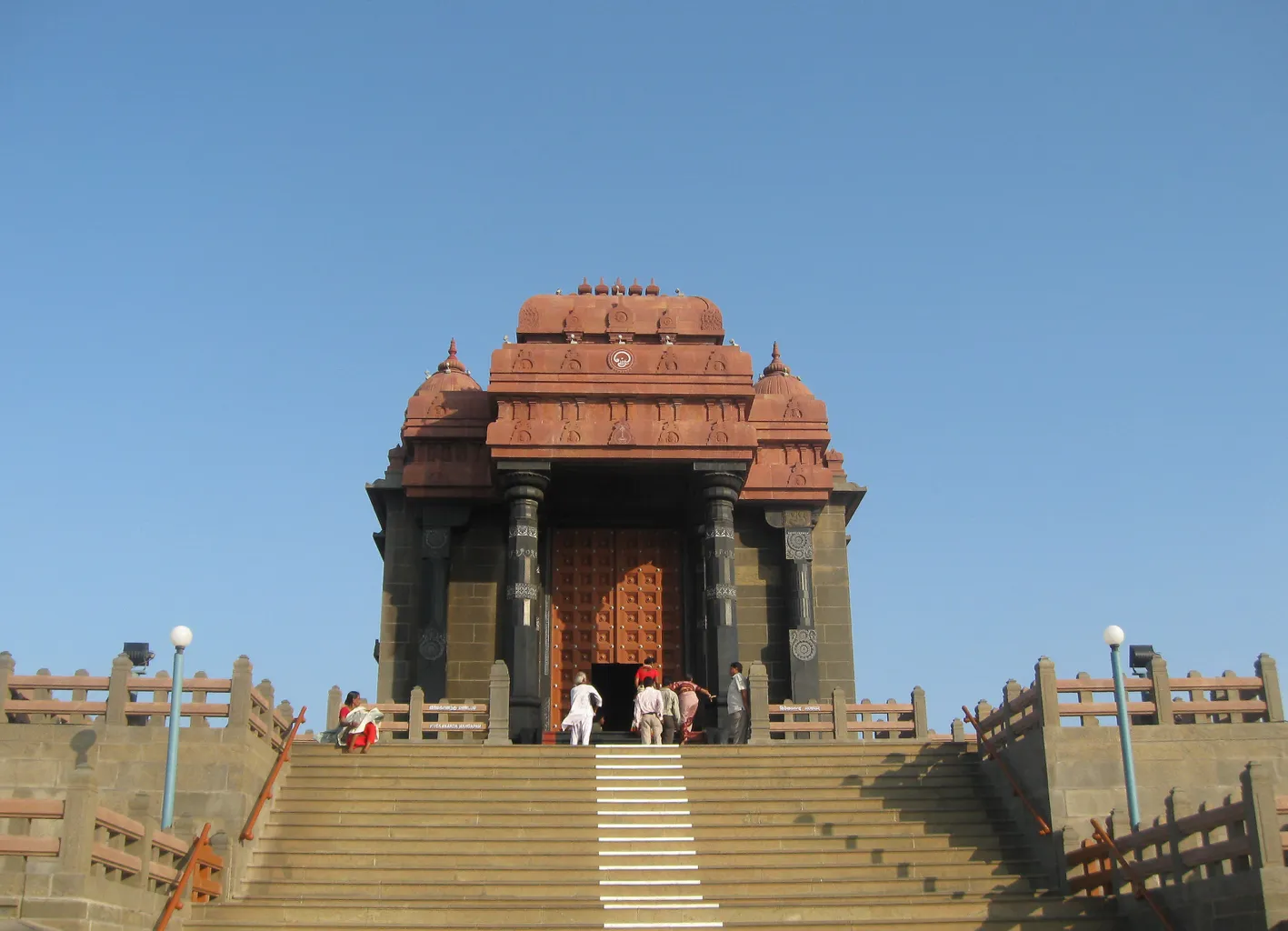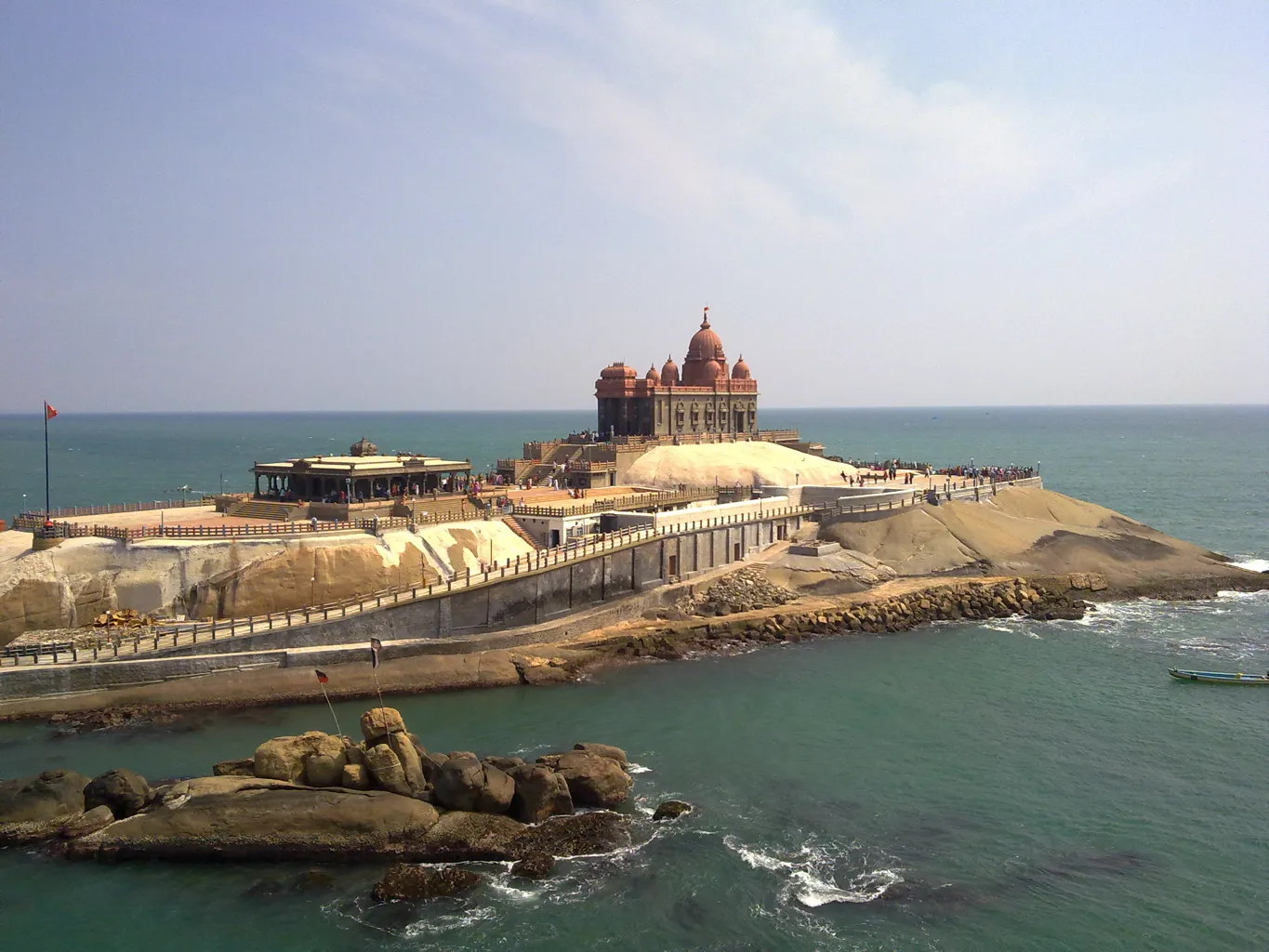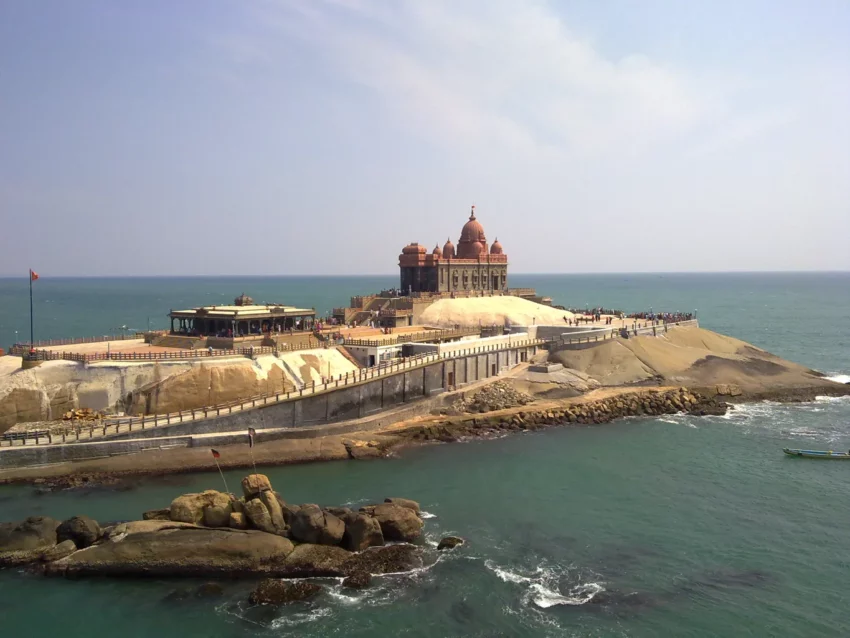Vivekananda Rock Memorial is a monument and popular tourist attraction at India’s southernmost tip in Kanyakumari. The memorial stands on one of two rocks about 500 meters off the mainland at Vavathurai. Built in 1970, it honors Swami Vivekananda, who is believed to have attained enlightenment on this rock.
Get your dose of History via Email
Historical Significance
According to legend, Goddess Kanyakumari performed tapas in devotion to Lord Shiva on this rock. The memorial includes a meditation hall called Dhyana Mandapam, designed with architectural styles from across India. The surrounding Laccadive Sea marks where the Bay of Bengal, Indian Ocean, and Arabian Sea meet. The memorial comprises two main structures: the Vivekananda Mandapam and the Shripada Mandapam.

The Legend of Swami Vivekananda
It is believed that Swami Vivekananda swam across the Kanyakumari seashore to reach the rock. He meditated there for three days and nights until he attained enlightenment. Many books mention his swim and subsequent enlightenment on this rock.
Initiation of the Memorial
In January 1962, during Swami Vivekananda’s birth centenary, a group formed the Kanyakumari Committee. They aimed to build a memorial on the rock with a pedestrian bridge leading to it. Meanwhile, the Ramakrishna Mission in Madras also started planning this memorial.

Controversy and Resolution
Initially, local Catholic fishermen opposed the memorial, placing a large cross on the rock. This led to protests by Hindus, claiming the rock as a place of worship for Swami Vivekananda. A judicial probe declared the rock as Vivekananda Rock, and the cross was removed secretly. Amidst rising tensions, the government declared the rock a prohibited area with armed guards.
The government later decided that only a tablet could be installed, not a full memorial. The tablet was installed on January 17, 1963. However, Eknath Ranade, tasked with leading the Rock Memorial project, sought full support from the Ramakrishna Math and Mission. He faced resistance from state and national leaders but garnered support from 323 Members of Parliament. This support persuaded the Prime Minister, leading to approval for the memorial’s construction.
Overcoming Challenges
Ranade faced multiple challenges, including proving the rock’s structural soundness and securing materials and labor. Despite financial constraints, he never slowed the project. He initiated a nationwide fundraising campaign, ensuring contributions from every Indian state.

Inauguration and Legacy
The Vivekananda Rock Memorial was inaugurated in 1970 and dedicated to the nation. In 1972, the Vivekananda Kendra was established as a living memorial alongside the stone structure. This spiritually oriented service mission aims to spread Swami Vivekananda’s messages of salvation, social upliftment, and equality.
Architectural Splendor
The memorial blends West Bengal and Tamil Nadu architectural styles with influences from Ramakrishna Math in Belur, West Bengal. It features the Vivekananda Mandapam, which includes:
Dhyana Mandapam
This meditation hall includes six adjacent rooms.
Sabha Mandapam
This assembly hall comprises Pratima Mandapam (statue section), two rooms, a corridor, and an open prakaram (outer courtyard) surrounding the Sabha Mandapam.
Mukha Mandapam
These structures honor Vivekananda’s legacy, offering visitors a place for reflection and meditation.
Vivekananda Rock Memorial stands as a testament to Swami Vivekananda’s life and teachings, attracting visitors from all over the world. It symbolizes spiritual enlightenment and national pride, continuing to inspire generations.
Source: Wikipedia

